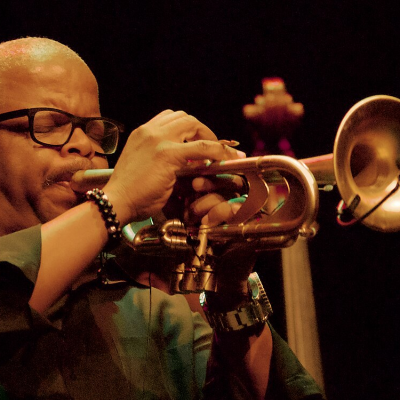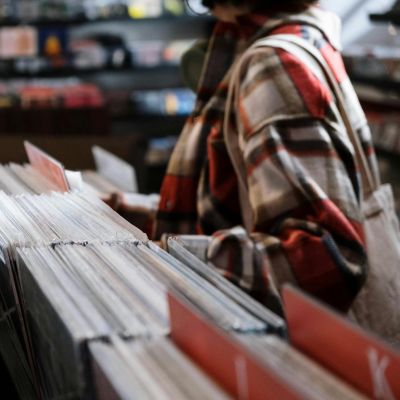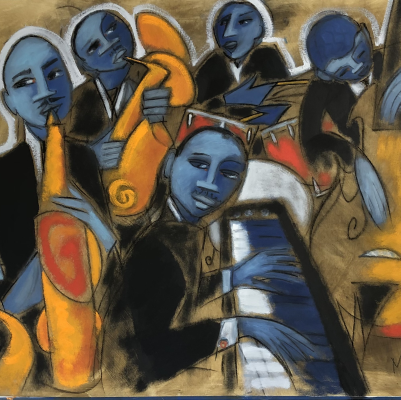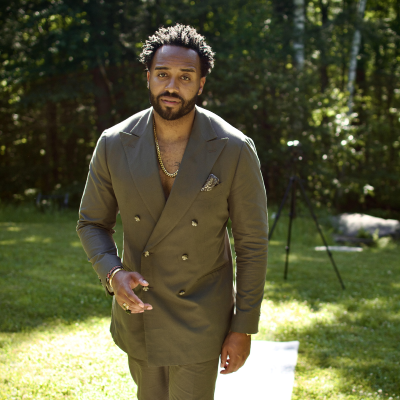JJM Sex had a big role in this story. There is an incident where a white man, George Adams, was presumed to have committed suicide, but there is a feeling that the Ku Klux Klan murdered him because he was not keeping his daughters away from black men.
LW Yes, that is what some people believe, and I think that there is a good possibility of that. Unfortunately, like so many things in the book, I can’t prove that. All I can say is that some people said it was suicide, and other people just as strongly believe he was murdered, because it had to do with the very thing you said — his daughters engaging in sex with George Dorsey and other black men.
One thing that no one has ever offered a good explanation for is what the motives were for the lynching of the women. I never found anything to indicate that, other than their being a little bit wild, they had done anything to warrant that kind of treatment, even in the mindset of the day. So, I do think it is possible that they just went along for the ride with Loy Harrison to pick up Roger from jail. Harrison may have thought they would be spared the lynching, but the mob members decided not to.
JJM One of the women called out somebody’s name in the mob, and that may have sealed her fate.
LW That’s right, but they must have known that she would eventually talk after witnessing the murders, even before she called out the name of someone in the mob. The other thing to keep in mind is that Loy Harrison said one of the women called out someone’s name, but he is shown not to be very reliable. The woman calling out a name may have merely been a story Harrison made up to explain the deaths of the women. That is the thing about this book, there is a lot of information about lynching, but there is a hole, a blank spot in the center of it.
JJM Was the lynching publicized all over the country immediately following it?
LW Yes. The news traveled very quickly. On the morning after the lynchings, the news leaked out to Atlanta, I suspect via the black undertaker Dan Young. From there a call was made to Walter White at the NAACP headquarters. White’s office was a publicity machine, and he got press releases and telegrams out to all the major news outlets, to the attorney general, to the president’s office, and to all the black newspapers in the country. From there the story really grew. Within forty-eight hours, there were about thirty radio and newspaper reporters in Monroe, covering the story.
JJM Did outrage around the country accompany the news of the lynching?
LW Yes, there really was. One of the most memorable things I did in my research was to read through a stack of approximately one thousand citizen letters I had access to through the Freedom of Information Act. These were letters that the average citizen had written to the president or to the attorney general, others were petitions that groups had their members sign. I would estimate that ninety-eight percent of these letters and petitions called on the federal government to do something about these acts of violence. In many of the communications, there were references to the war we had just fought on behalf of democracy and against fascism. A lot of bitter irony appeared in the letters, suggesting that the veteran George Dorsey had gone halfway around the world fighting on behalf of democracy, only to come back to be killed in his own democratic country. Repeatedly, citizens were exhorting the federal government to take action. To be fair, there were a few letters suggesting that the government needs to butt out and let Georgia handle their own situation.
JJM Why couldn’t the federal government prosecute lynchers?
LW The problem goes back to the definition of lynching, which is the act of murder. Because murder is a state crime, it is only prosecutable in a state court by state and county attorneys. Thus, the federal government had no jurisdiction. Where they did have jurisdiction was in the area of civil rights violations, which is the worst way to have to come into a lynching investigation. This is a bit of a simplification, but to prove a civil rights violation, essentially, they had to find an officer of the law who had been involved in either the planning or the carrying out of the lynching. Without that, the federal government really had no legal leg to stand on, and they had to go through a lot of legal gymnastics before it even got to court. In this case, the FBI came in, largely due to the political pressure from the NAACP and the media. There were pickets in front of the White House, mass marches, and a demand for action. In response to this, Truman sent the FBI in. Twenty-five agents interviewed three thousand people over a four-month period. They had no evidence against any single person on murder or civil rights violations. A grand jury was convened, yet nobody was indicted.
JJM This was a major source of frustration and embarrassment for the FBI. You write, “Hoover not only wanted his agents out of Walton County, he didn’t want them assigned to lynching investigations in the future.”
LW Right. They had not won a clear lynching victory since they started prosecuting lynching in the late thirties. Hoover liked to be known for getting his man, not for not getting his man, and he felt that the way the law was written, he had no hope of winning lynching investigations and that it was work that should be left to the state. In literal terms he was right, but in terms of reality, the states weren’t doing anything to prosecute lynchings, so the federal lawyers felt like they had to do something. Yes, it was imperfect, and yes, even if they did get a conviction the punishments were very slight compared to what you would get for murder, but they felt they had to do something.
JJM When describing the African American of Monroe, Georgia, and in response to the community’s request to involve black FBI agents in the case, you quote FBI Director J. Edgar Hoover as saying, “The particular type of Negro living in Monroe was a very ignorant type of Negro, and for that reason they were scared, they wouldn’t talk hardly to anybody, and I don’t think they would talk to a Negro agent.” How did Hoover’s racism factor into the investigation?
LW When I first read that statement, I remember thinking to myself that if they were so scared, why would they not talk to a black FBI agent over a white agent? To me, that statement shows how out of touch he was with the reality of what it was to be a black person living in the rural South.
JJM It wasn’t like he employed black agents anyway.
LW Yes, in practice it wouldn’t really have been possible, and they probably would have been in great danger. Throughout, this investigation was hampered by institutional and personal racism. While I don’t know if the agents working on the investigation were all racist, I do know that all of them were from the South, raised in a racist part of the country. Because there was so little physical evidence in this case, it meant you needed to rely on witnesses. And relying on witnesses meant that you had cultivate a relationship and trust, and these agents did not inspire trust among the people in the black communities. The gap was just too big, and there was distrust on both sides. As I write in the book, black people of Walton County had no real faith in the FBI at all — they did not see them as their knights in shining armor coming to solve the crime and set things right. They were very distrustful of them, so there was really no way that the investigation was going to succeed.
JJM On June 29, 1947, Truman spoke at the Lincoln Memorial and said, “It is my deep conviction that we have reached a turning point in the long history of our country’s efforts to guarantee freedom and equality to all our citizens. Recent events in the United States and abroad have made us realize that it is more important today than ever before to insure that all Americans enjoy these rights. We must and shall guarantee the civil rights of all our citizens.” What did Truman do to insure this?
LW He had already appointed a presidential committee on civil rights in January, which was really a big move. The committee had convened most of the Spring and Summer, and from their work presented the report “To Secure These Rights” in September, which recommended legislation that would eventually be enacted during the civil rights period. One of the things the committee recommended was desegregating the armed forces, which Truman did in 1948. Truman was constrained by the time and the need to get elected, and he risked a great deal politically to support a civil rights platform. In 1948, as a result of their dissatisfaction with his stance on civil rights, Southern Democrats split off and became the Dixiecrats.
I don’t want to make Truman into a crusading civil rights hero, because I don’t think he was. While he certainly wasn’t for full-scale integration, it is clear to me that he was a humanist. What horrified him the most was the violence being done to black people — particularly to black veterans — and that is what galvanized him to take action to secure their rights.
JJM No one can question what heroes like Jackie Robinson and Rosa Parks meant to the passage of civil rights legislation, but World War II was the event that may have truly set the stage for the era. This is another example.
LW Yes, I believe that the World War II period gets overshadowed. Most of us think the modern civil rights movement began in 1954 with Brown versus Board of Education, or with Rosa Parks, but I think the post World War II period provided an opening for progress toward greater equality. Had that opening been better exploited, the civil rights movement would have happened earlier. Instead, for the most part, it shut down. It took many more years before the momentum really grew again.
JJM The war caused people — politicians included — to question themselves about the way they were treating their fellow citizens.
LW I think so. The democratic rhetoric was certainly at an all time high. We wanted to define ourselves in contrast to Nazi Germany and imperialist Japan, and an unsolved and unprosecuted lynching didn’t help distinguish us from Nazi Germany. It made us look like them in a way.
JJM You wrote, “Every story in the Moore’s Ford lynchings gets blurrier the closer one looks.” Do we really know what happened, and who the murderers were?
LW I would like to know for certain what happened and who pulled the triggers, but I don’t, which I am sorry to report. However, I would bet good money that Weldon Hester and Loy Harrison were involved in some way. Beyond them is a group of people who were likely to have been involved, but we don’t have a list of names. People want resolution, and the community wants it now. They believe people who were involved in this lynching are still alive, and would like to see them come to justice. The problem is that what little physical evidence existed in 1946 no longer exists, and the witness testimony evidence is largely gone. The main players have died. Many people think they know things now — and a lot may — but it is not a pure investigative field in any sense, so the prospect of solving this crime in a court of law is not bright.
My sense is that the community is going to have to find some other way of dealing with this crime in a more communal sense, and I think they are trying to do that. When I went to Walton County in February to do a reading, I could see that the book pushed this crime into the open, and that people were more open to talk about how much the community was responsible, and how much certain individuals were responsible. There are questions concerning how much the community should remember and how much should they forget, and who has the right to tell what happened, and who may know what happened. There is ongoing debate about these questions.
JJM I don’t imagine that you were the most popular person in some circles of Walton County. Some people may have had some fear about what you would uncover, perhaps even that they would be “found out.”
LW Yes, you are right. When I was traveling through Walton County, asking questions, I was not welcome in some circles. Interestingly enough, when the book came out, some of the same people who didn’t want to help me with my investigation came to my reading and wanted a signed copy of the book, so go figure. I don’t know what that is about. Maybe curiosity about local history
JJM Or, perhaps they were relieved that you weren’t able to solve the crime?
LW There are certainly some people who think that their family was involved, and they are probably dealing with guilt and all that goes with that. There are other people who feel they are untouchable, and believe that so much time has passed nothing is ever going to happen to them.
______________________________________
Fire in a Canebrake:
The Last Mass Lynching in America
by Laura Wexler
*
“2.4 miles east, at Moore’s Ford Bridge on the Apalachee River, four African-Americans — George and May Murray Dorsey and Roger and Dorothy Dorsey Malcom (reportedly 7 months pregnant) — were brutally beaten and shot by an unmasked mob on the afternoon of July 25, 1946. The lynching followed an argument between Roger Malcom and a local white farmer. These unsolved murders played a crucial role in both President Truman’s commitment to civil rights legislation and the ensuing modern civil rights movement. In 1998, a biracial memorial service honoring the victims was held at Moore’s Ford Bridge.”
Erected by The Georgia Historical Society and the Moore’s Ford Memorial Committee, Inc.
______________________________________
About Laura Wexler
JJM Who was your childhood hero?
LW Probably Laura Ingalls Wilder. I read all the Little House on the Prairie books, and loved that she was an adventurous young girl, striking out for the territory with her family. The pioneering of it interested me.
JJM What books did you read as a young woman that sparked your interest in writing Fire in the Canebrake?
LW Probably the works of Toni Morrison, which I read during college. I don’t remember reading any books about race in high school, but once I got to college I had this sort of cliched awakening. I read Richard Wright’s Native Son — which really knocked me for a loop — and then I read Ralph Ellison’s Invisible Man and everything by Toni Morrison. All of those books affected me in numerous ways.
*
Laura Wexler has published work in The Oxford American, DoubleTake, Utne Reader, and elsewhere. She has taught writing at the University of Georgia and Johns Hopkins University and lives in Baltimore.
________________________________
Laura Wexler products at Amazon.com
_______________________________
Interview took place on September 8, 2003
*
If you enjoyed this interview, you may want to read our interview with The Burning author Tim Madigan on the Tulsa race riots of 1921.
*
Other Jerry Jazz Musician interviews
* From the publisher


































